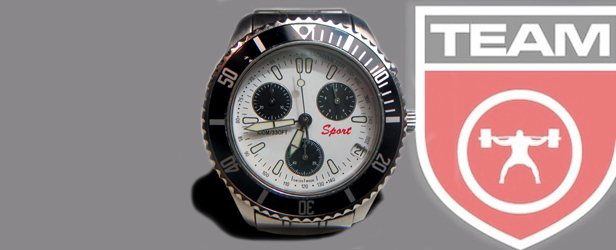
If you have been to a few powerlifting meets, I am sure you have seen it. Those new lifters who are so excited to lift that they start warming up too early and are finished 30 minutes before their flight even begins. So, they either take more time to warm up—wasting more and more energy, or they end up being cold for their first attempt. This is where an experienced handler helps to slow down and speed things up as needed.
The handler's job is to take care of everything except lifting the weights. Timing of the warm ups is just one of the many tasks that falls under the handler's responsibility. Warm ups need to be carefully timed so that the lifter is warm, rested, and ready with their equipment for their first attempt without feeling rushed. To do this successfully, there are a few things that need to be known:
1. Where is the lifter located in his or her flight?
Most flights are comprised of 10 to 15 lifters, and it is safe to assume that each lifter will require about one minute per attempt. The lifters I handle like to have 10 to 12 minutes before their first attempt. So if your lifter is at the end of the flight, his/her last warm up will be around the time the last lifter from the previous flight or the first lifter of your flight is on the platform. This allows the lifter enough time to grab a chair, get a drink, and mentally prepare.
2. How many warm up attempts does the lifter need?
The level of the lifter will determine how many warm ups he/she needs. A lifter who squats 1,000 pounds will naturally need more warm ups than a lifter squatting 500 pounds. So plan in advance. The lifter and handler should discuss how many warm ups are needed, when the lifter needs to add his/her gear, and how much time he/she needs between warm ups.
3. How much time is needed to put on equipment?
If you are dealing with gear, an additional five or ten pounds could make putting on gear a huge headache. Plan on taking a few extra minutes for putting on suits and shirts, or for even switching out gear if needed.
4. In which flight is he/she lifting?
If your lifter is in the first flight, the planning is fairly straight forward. If the meet starts at 9:00 a.m., add what position your lifter is in the flight and then work backwards.
Example: 9:00 a.m. start + sixth lifter = work backwards from about 9:06 a.m.
The catch is that most meets start late. You will want to keep in contact with the meet director as the warm ups continue in order to verify that the meet will start on time.
If your lifter is in the second or third flight, count the number of lifters as minutes. Again, you want to work backwards from your position in your lifter's flight. If the current flight has 10 to 15 lifters and you need five minutes between warm ups, you can take three or four warm ups per round of attempts.
Example: You are the second lifter of the second flight.
You need to know that the first flight has 15 lifters.
The lighter warm ups can be sped up or slowed down as needed, but you will want the last few to be timed perfectly.
5. How fast is the meet running?
Some meets just run faster than others. If the first flight is lightweights or raw lifters, many times their attempts will go faster. It could be anything from smaller weight changes to the bar, more lifters using the same weight, or just an efficiently run platform— just be aware of how fast the flight is moving. The handler needs to be aware of this, and as the lifter, you need to be in shape to handle a slightly faster warm up.
If you don’t have an experienced handler, write everything down on paper. You don’t want to end up in a fight with the person who came to help you out. You will want to keep an eye on things, but it will take some pressure off of you when the handler knows exactly what you need and when you need it. If you are new to powerlifting, you will be nervous enough. You don’t need the added pressure of doing it alone.
A great handler will take the pressure off the preparation. So the only thing you need to worry about is breaking records!









